
Xiaomi Mix Flip: Two-minute review
You might not realize it, but Xiaomi's gotten pretty good at making foldables. Although not every entry has launched internationally, the company is now on its fourth generation of Mix Fold. Despite playing in this space since 2021, one thing Xiaomi has never attempted is a clamshell. Until now.
The Xiaomi Mix Flip made its international debut alongside the Xiaomi 14T and Xiaomi 14T Pro, with relatively modest fanfare, but that doesn't detract from what looks to be a capable competitor to the Motorola Razrs and Galaxy Z Flips of the world, not to mention an impressive first foray into what is a new form factor for the company.
The Mix Flip nails the fundamentals, with an expansive 4.01-inch cover display and a killer main display that work beautifully in concert. Performance is top-tier, however, the phone's form factor hinders prolonged performance, from a thermal perspective.
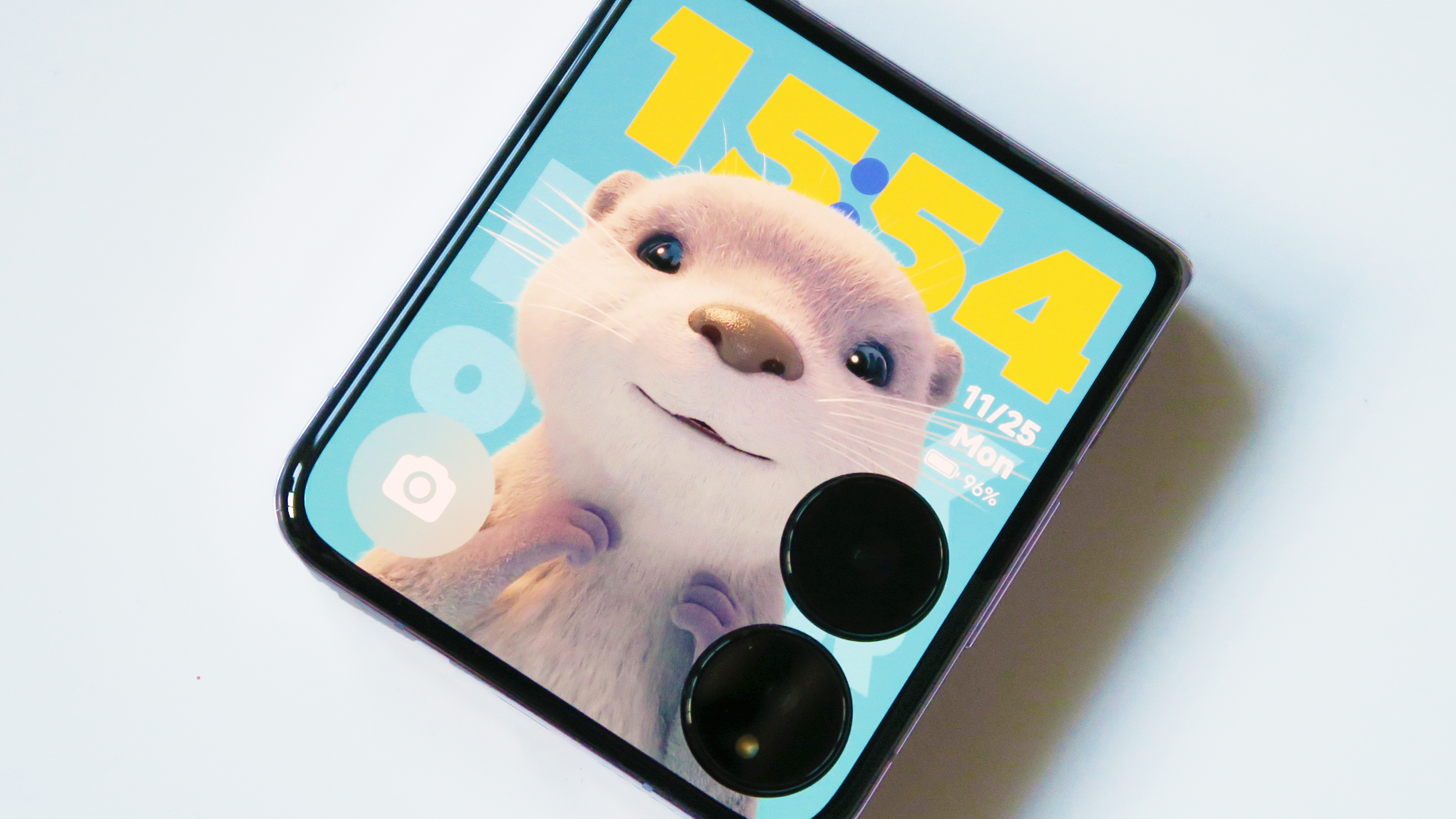
A large battery ensures all-day use, in spite of those demanding screens, while fast 67W wired charging can refill the phone in less than an hour. The company wasn't able to squeeze in wireless charging, or IP68 certified protection against dust or water, for that matter.
Xiaomi's famed image processing holds up what is, underneath, modest camera hardware. Add in Leica's involvement and you've got arguably the best clamshell camera phone currently on the market, though there is room to improve, in terms of detail and clarity.
As I've seen with other Xiaomi phones, it's Xiaomi's software that lets the Mix Flip down. HyperOS is leaner than its predecessor, MIUI, but the end result still plays host to occasionally confusing and restrictive user experience paradigms, paired with app bloat and too many baked-in ads. A shame, especially for a phone at this price.
Offering only one storage and memory configuration might seem restrictive, but Xiaomi chose wisely from a value perspective (12GB RAM + 512GB storage), relative to the likes of Samsung and Motorola. That said, unlike those big-name rivals, and despite an international launch, you won't be able to get your hands on the Mix Flip natively in the US and Australia.
Xiaomi Mix Flip review: Price and availability
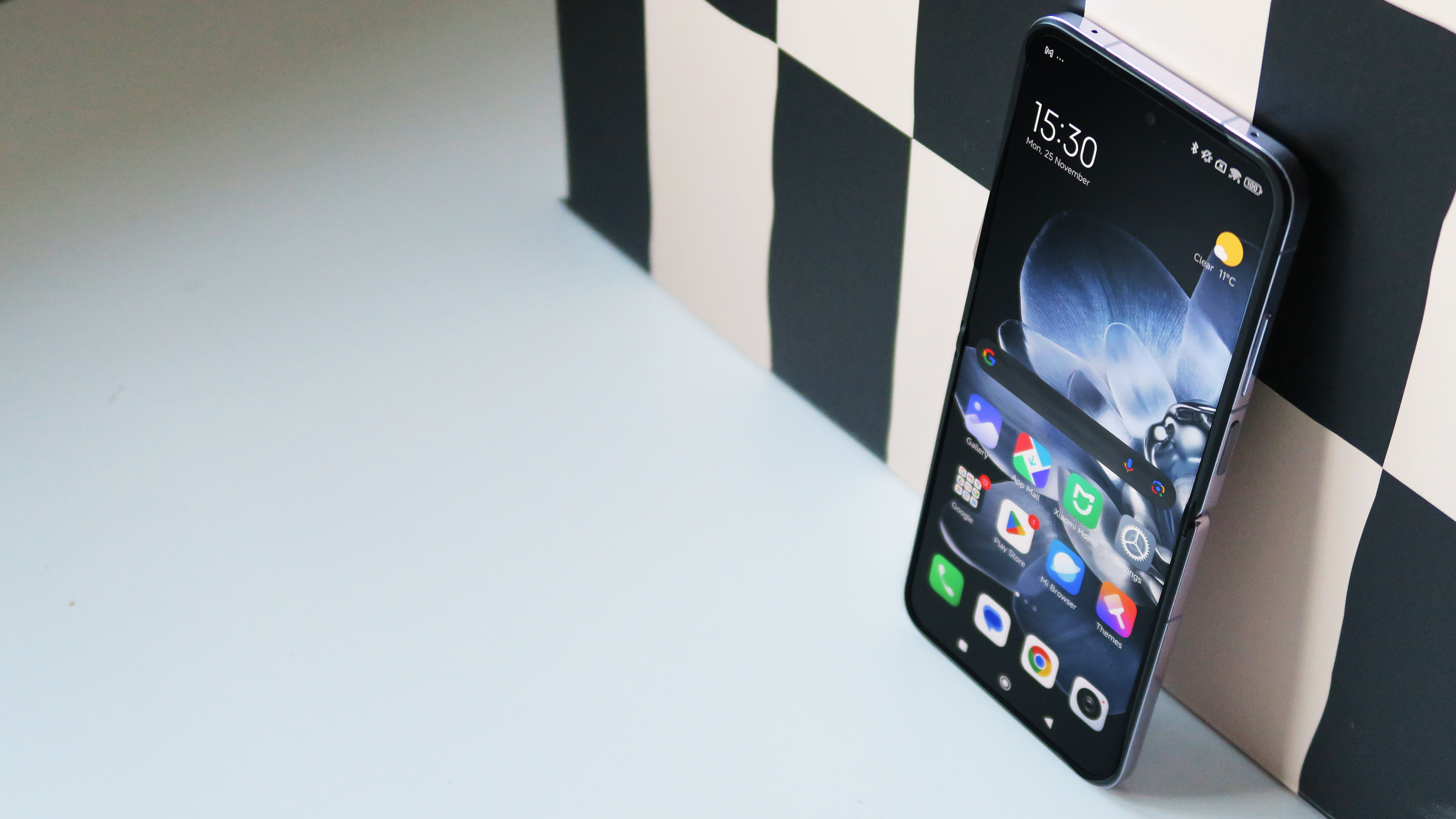
- Priced at £1,099 / €1,300
- On sale from September 26, 2024
- Limited international availability compared to rivals
The Mix Flip went on sale internationally on September 26, alongside the aforementioned Xiaomi 14T series. That was a couple of months after its initial debut in China.
Despite launching at a higher starting price compared to its most prominent rivals – the Samsung Galaxy Z Flip 6 and Motorola Razr Plus 2024/Razr 50 Ultra – the Mix Flip with 12GB RAM / 512GB storage might be a better value than Samsung's latest clamshell.
Although you can pick up a Z Flip 6 for around £50 less in the UK, at £1,049 you get half the storage, in comparison to the Mix Flip. And, if you're looking at like for like, the 512GB Flip 6 actually clocks in at £50 more than Xiaomi's offering, which likely isn't a coincidence on Xiaomi's part.
Motorola's latest entry is £100 more affordable, but that can be explained, in part, by its use of a modest Snapdragon 8s Gen 3 chipset and its shorter OS update roadmap.
Despite being a global release, Xiaomi's smartphone presence doesn't extend to markets like the US or Australia. That means it remains out of reach for those in such regions looking for alternatives to the likes of Motorola or Samsung.
- Value score: 4 / 5
Xiaomi Mix Flip review: Specs
Xiaomi Mix Flip review: Design

- Side-mounted fingerprint sensor
- Functional hinge between 45° and 120°
- No IP-certified dust or water resistance
Xiaomi didn't simply translate the existing design language already established by its long-running Mix Fold line, when deciding on a look for its first clamshell foldable. Instead, the Mix Flip has an aesthetic all its own.
It's distinct from its most obvious rivals, with pillowed glass and a body that – although thicker than Moto's or Sammy's latest clamshells – still makes for a pleasingly slim and comfortable handset to wield in the pocket or hand.
That lightly textured glass on the back works in contrast to the polished metal frame and glossy outer screen of the Mix Flip, to great effect. Its incredibly neat 'dual-link' hinge, meanwhile, reveals an additional microphone when the phone is closed; highlighting a design optimized for functionality, without having to fully open up. I had a blast taking calls and making contactless payments, without ever having to open up the Mix Flip.
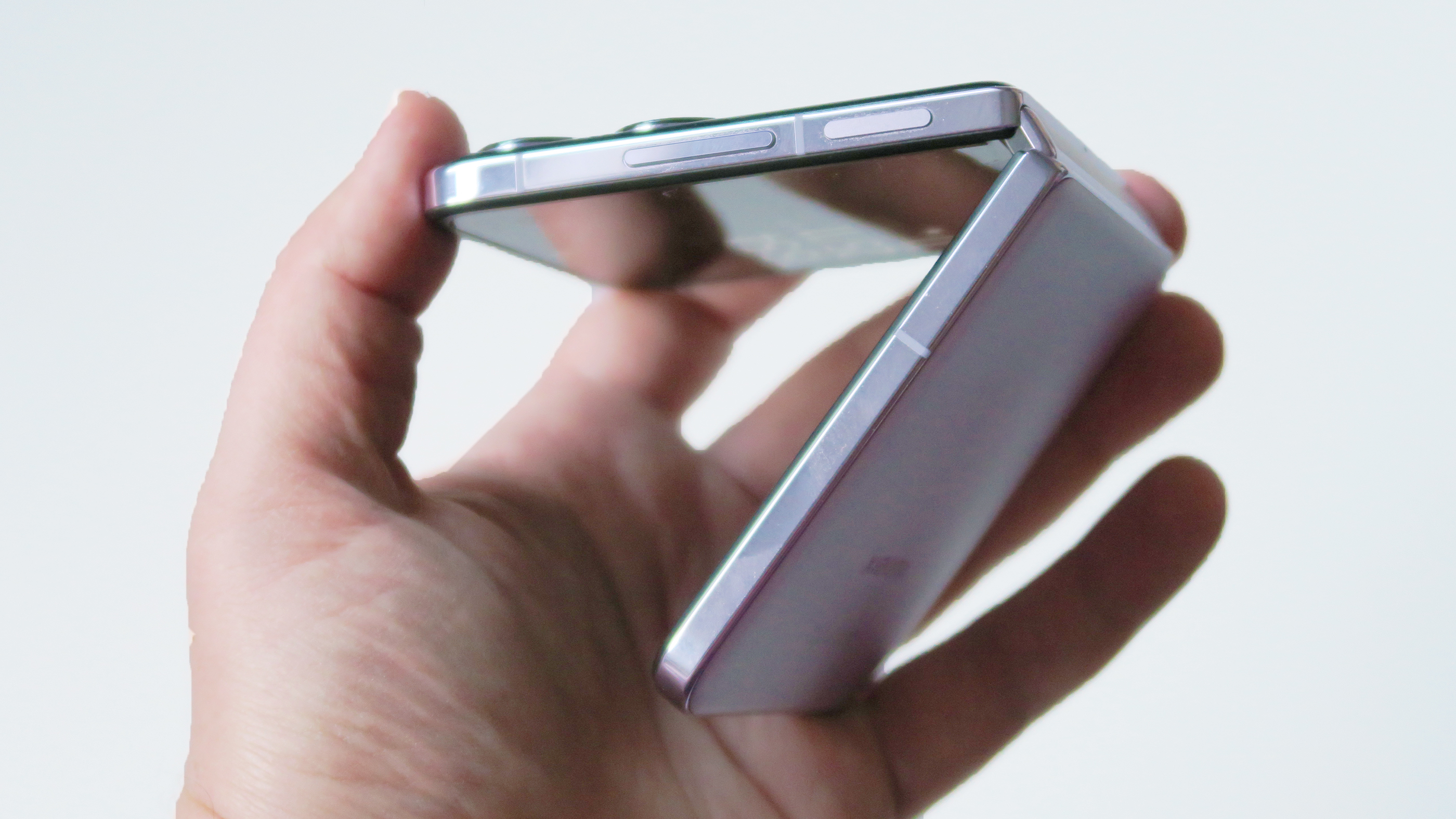
Speaking of opening, the Mix Flip's all-important hinge offers up a really nice feel when folding or unfolding, while its construction also allows for easy placement anywhere between 45° and 120°; ideal for watching content without a stand or taking snaps without a tripod.
That said, after testing the phone for a few weeks, I did notice the most subtle lateral shift in the hinge when grabbing the phone out of my pocket. Although a near-imperceptible wiggle that could only be felt and not obviously observed, it isn't something I've run into since the early clamshell days of the Samsung Galaxy Z Flip 3. I've seen no talk of this defect elsewhere, so it's likely unique to my review unit, but I'd be remiss if I didn't mention it.
A couple of other notable quirks include the phone's middling button placement, which leaves the volume rocker awkwardly high up the phone's right edge when unfolded, as well as a side-mounted fingerprint sensor, though it admittedly works quickly and was reliable during my review.

Unlike notable competitors, Xiaomi hasn't sought certification for ingress protection (IP) against dust or water with the Mix Flip, so while it boasts the company's tough Shield Glass (also branded as Dragon Crystal Glass) across its outer display (the main screen relies on UTG or ultra-thin glass, in order to remain flexible) and comes bundled with a color-matched case, the phone doesn't appear to sport any additional protection, beyond some pleasingly-tight tolerances, when it comes to keeping dust or water out of that all-important hinge.
On the subject of color, Chinese buyers have the choice of four finishes, including a fabric-backed variant and silver model, while the Mix Flip's international dressings fall to only a black option or a purple number (pictured), with textured glass that suffers from less grip but offers a nice contrast to the glossy glass of the outer display.
- Design score: 4 / 5
Xiaomi Mix Flip review: Display
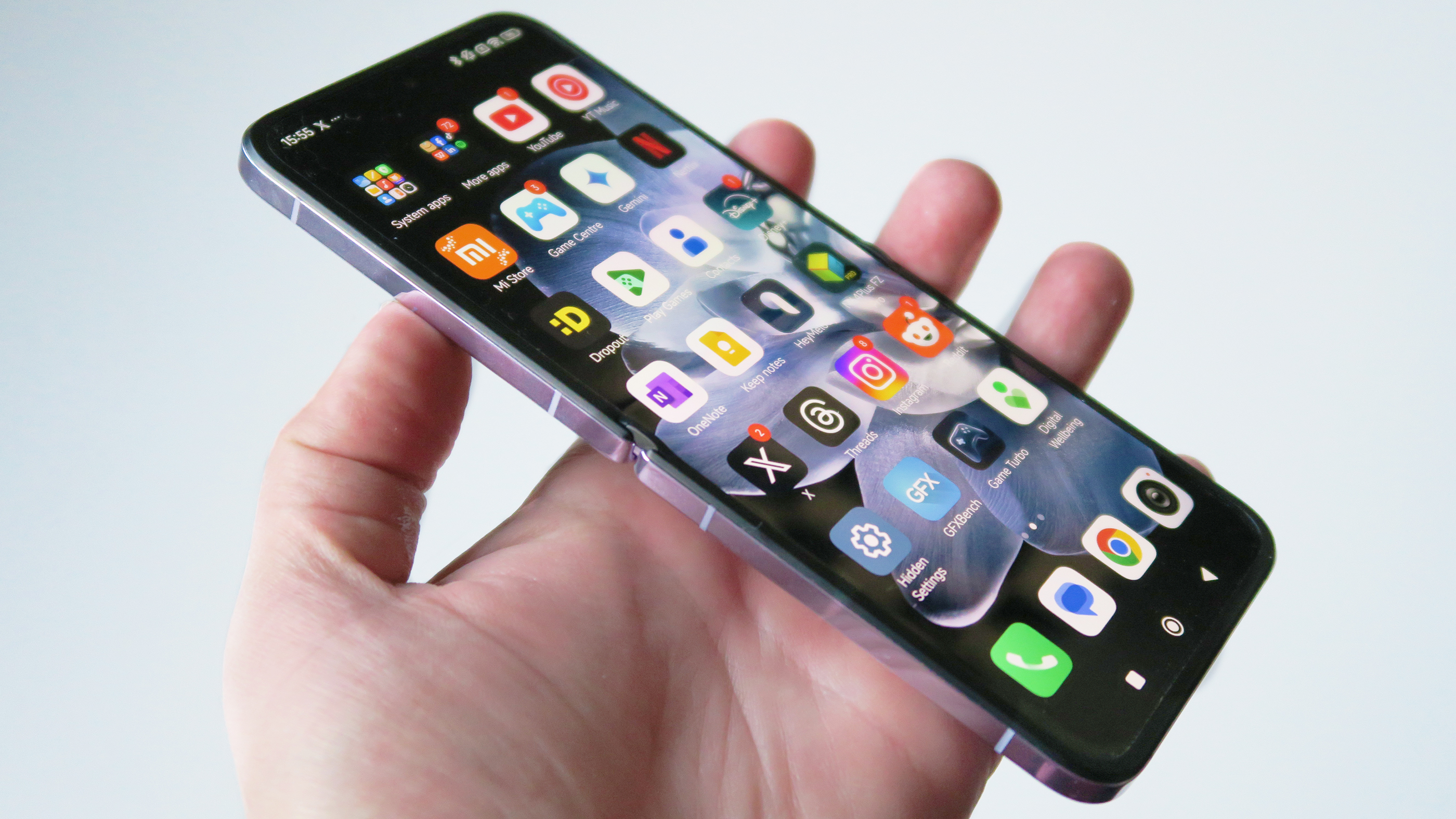
- Consistent viewing experience across inner and outer screens
- Sharper display than rivals
- AOD support on both screens
Despite being a new form factor for Xiaomi, it's clear that the Mix Flip isn't your basic first-gen foldable, by any means. That's perhaps most evident with the near edge-to-edge outer display, which wraps around the phone's dual main cameras: more Moto Razr than Galaxy Z Flip in its execution.
As is often the case with Xiaomi's high-end handsets, you're treated to a killer viewing experience, but here the company has also ensured that it's consistent across both the internal and outer screen, which isn't always the case with this form factor, based on other devices I've reviewed.
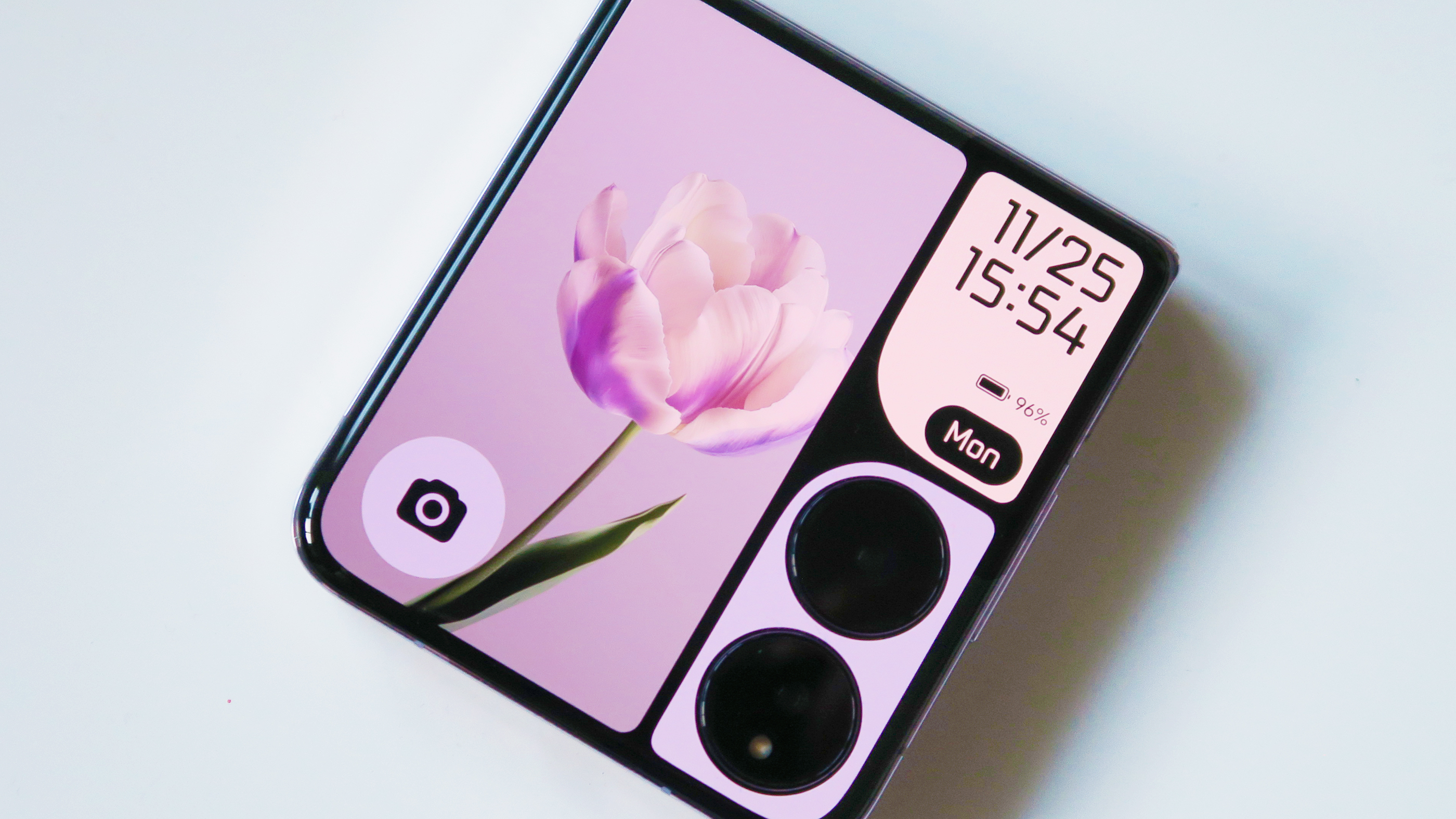
Whether you're looking at the near-square 4.01-inch outer screen or the expansive 6.86-inch 21.4:9 main display, you're treated to a pleasingly crisp 460ppi (pixels per inch) and the same adaptive 1 to 120Hz refresh rate, made possible by the use of LTPO AMOLED tech.
Xiaomi teamed up with fellow Chinese electronics giant TCL to develop the C8 Plus displays used by the Mix Flip, and they deliver solid viewing angles, and great color depth and contrast.
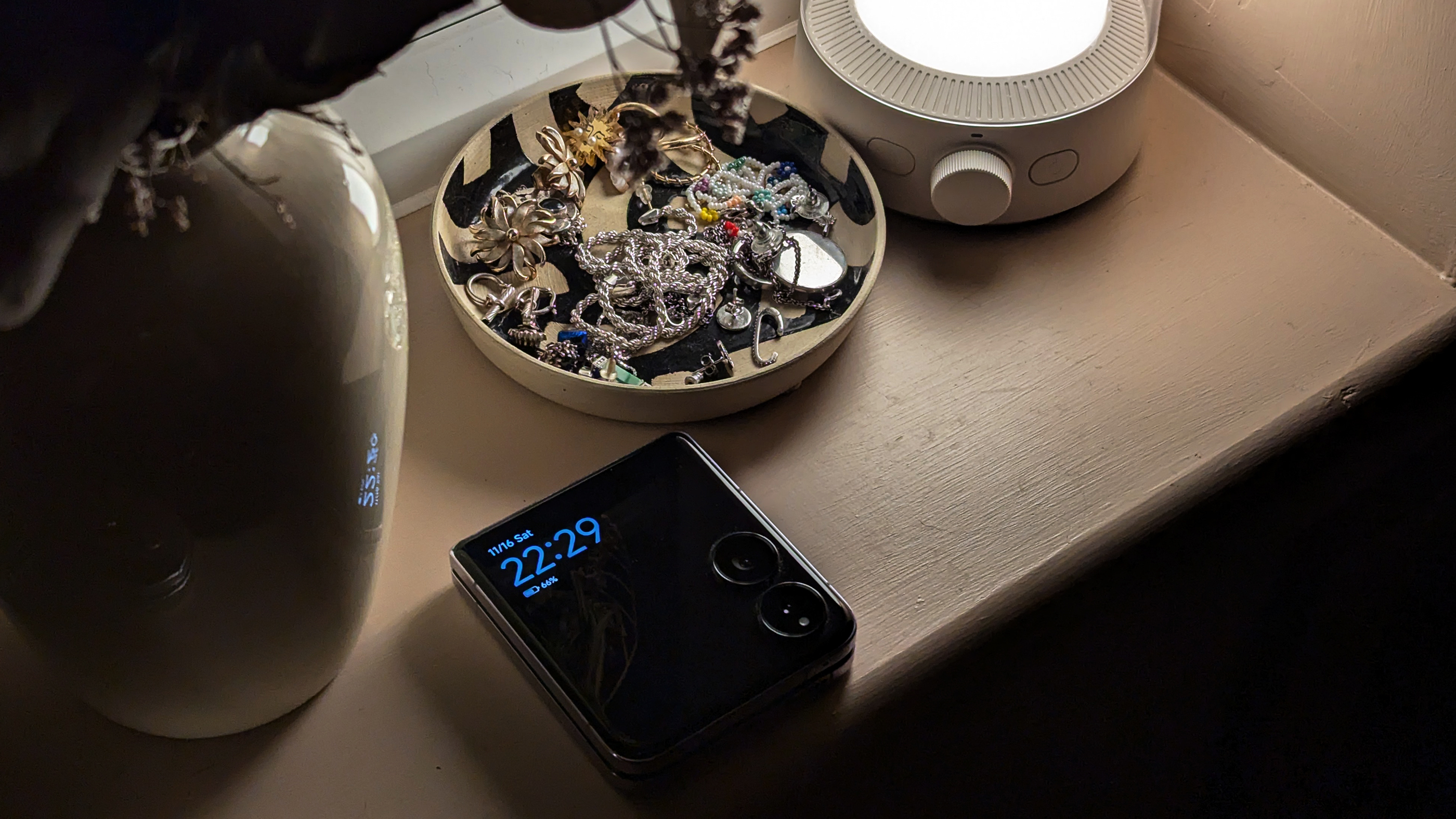
They offer consistently superb visibility, with a quoted panel-wide max brightness of 1,600nits and a peak brightness of 3,000nits (the Z Flip 6 peaks at 2,600nits), while the main display also has 2,160Hz PWM (Pulse Width Modulation) dimming, to help prevent eye strain in low light (the outer screen relies on more conventional DC dimming).
To top it off, the phone's display settings serve up heaps of control over things like color balance, app-specific dark mode behavior, and access to the always-on display, which functions across both screens, making the Mix Flip a great nightstand clock too.
- Display score: 5 / 5
Xiaomi Mix Flip review: Software
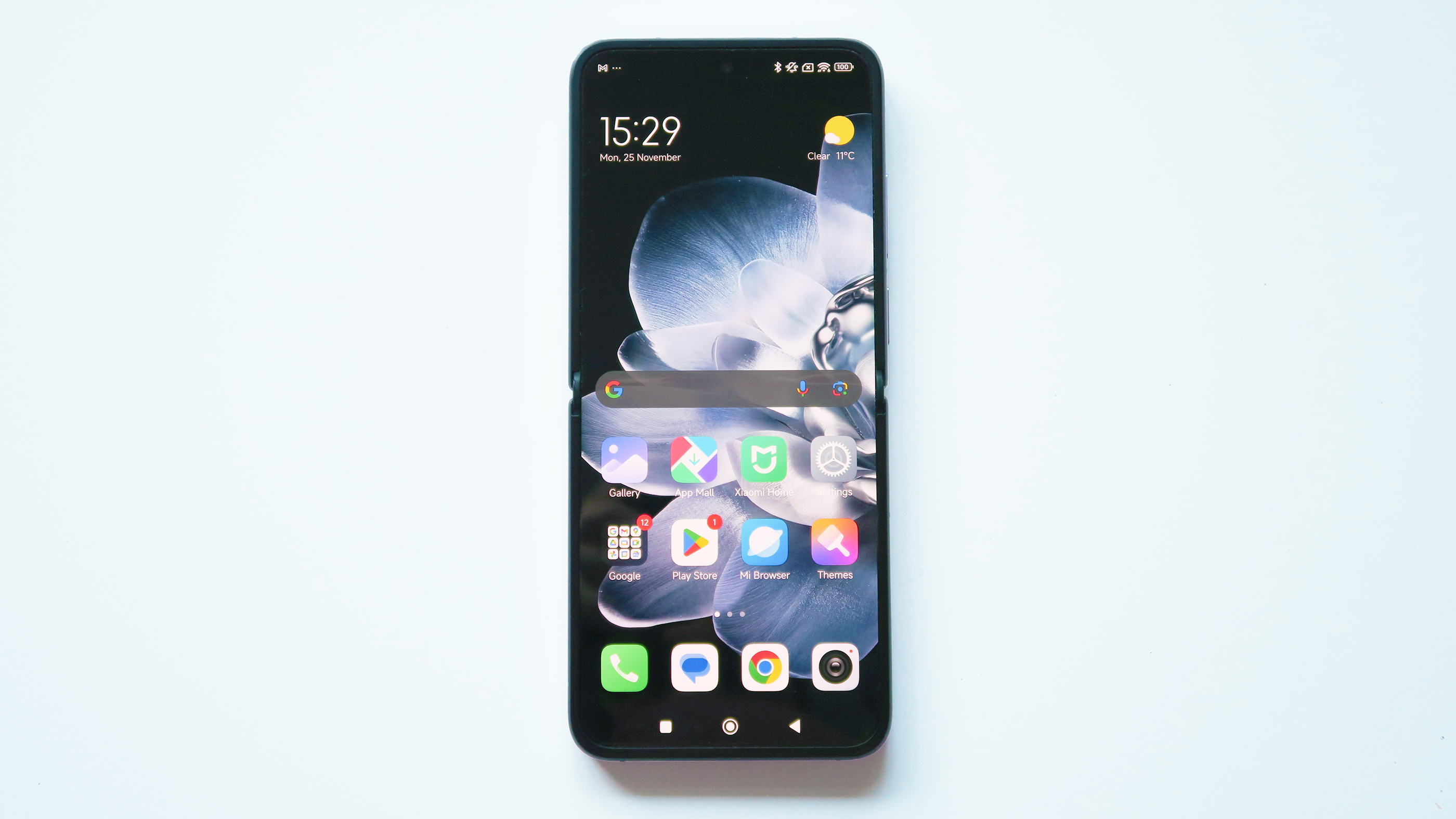
- 4 years of OS & 5 years security updates
- Launches with HyperOS 1.0 atop Android 14
- To many ads within Xiaomi apps and experiences
At the time of writing, Chinese Mix Flips are already making the move to HyperOS 2.0, but it'll be a little while longer for international units, which come running HyperOS 1.0 atop Android 14, out the box.
With Xiaomi's shift from MIUI to HyperOS – which coincided with the launch of the Xiaomi 14 series near the beginning of 2024 – the company had the chance to rework the approach taken by its mobile user experience.
While there's no denying that HyperOS takes up significantly less of your device's storage relative to the previous MIUI, the experience feels decidedly familiar and is fast falling foul of bad user design practices that are either too rigid to be helpful, or prioritize monetization over quality. That's particularly damaging on a phone that costs four figures.
Examples include the absence of access to native Android features – like Automatic Brightness and Extra Dim – within the phone's quick settings, without the use of third-party apps that resurface such controls. More egregious, though, are the growing number of ads within native Xiaomi experiences.
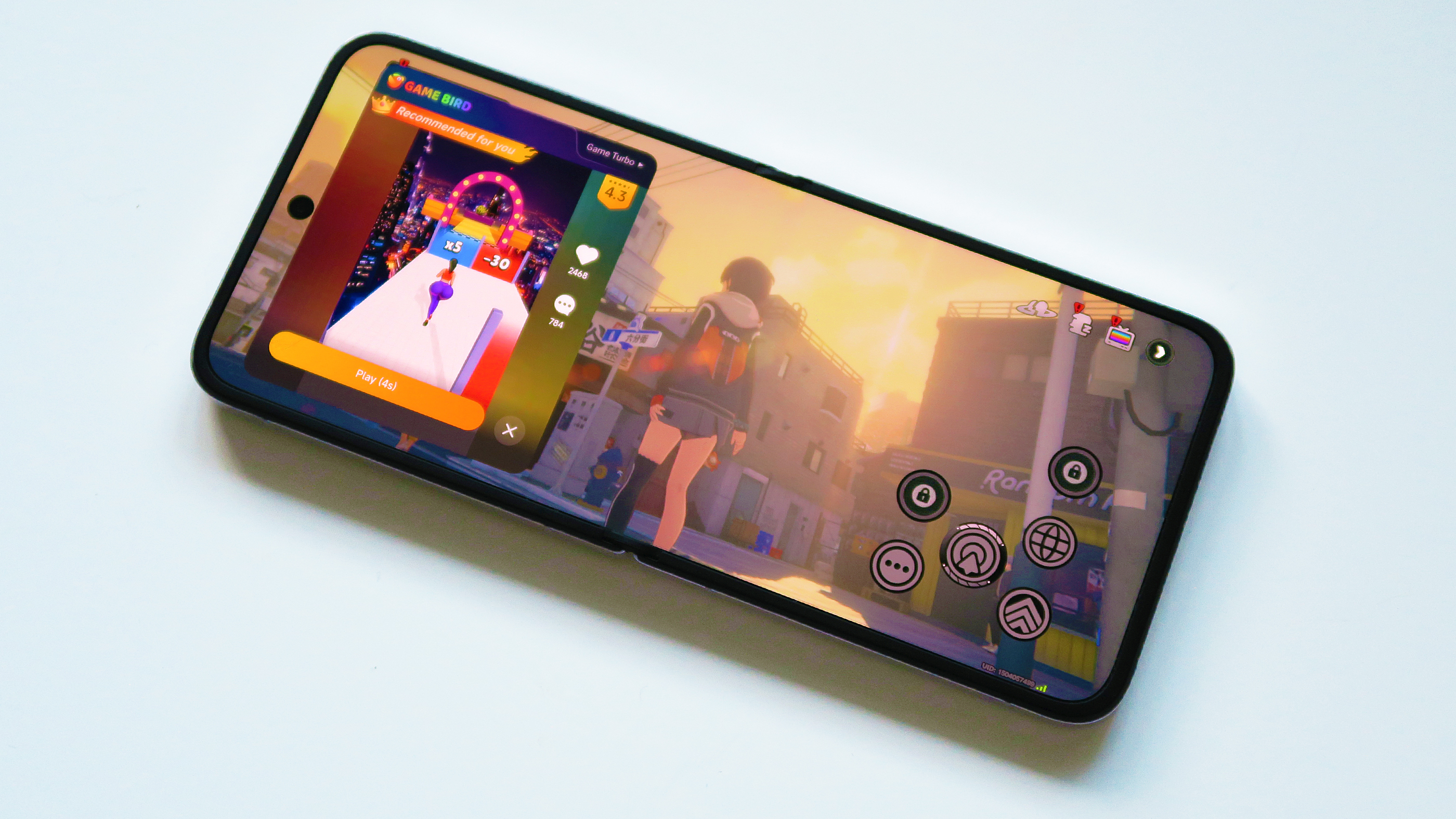
App Mall, the Theme Store and Game Center all repeatedly fired unwanted notifications to purchasable assets or apps that I had no interest in, while the useful Game Turbo overlay (which grants quick access to performance management controls when gaming) has now been capped by the addition of Game Bird, which serves up game trailers for poor quality, ad-riddled mobile games; the sort you often see as in-app ads or online.
It's not all naming and shaming, though. Tons of native customization, supported by an active Theme Store, filled with user-made submissions, makes for endless and effortless personalization. iPhone users, in particular, will appreciate the way HyperOS lays out its home screen apps, notifications and quick settings.
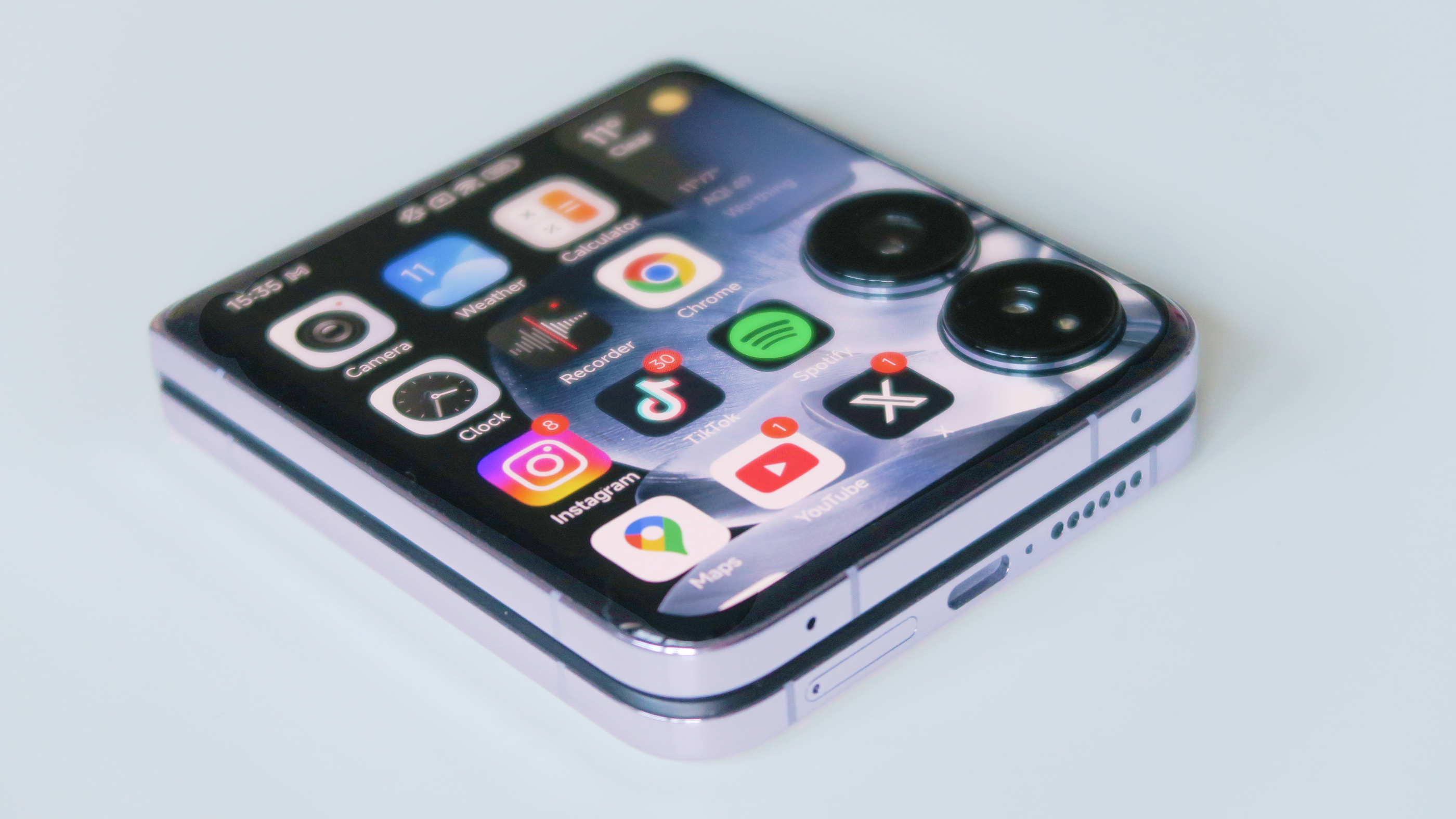
You'd think the unique aspect ratio of the Mix Flip's outer display might have posed a challenge for the HyperOS team, but the implementation they actually came up with is pretty brilliant.
While about a sixth of the panel is occupied by the phone's main cameras, the rest of the display is divided up into two sections. When unlocked, the small portion next to the cameras plays host to a dedicated widget, which you can swipe through to view the weather, various clock styles, recent apps used and more.
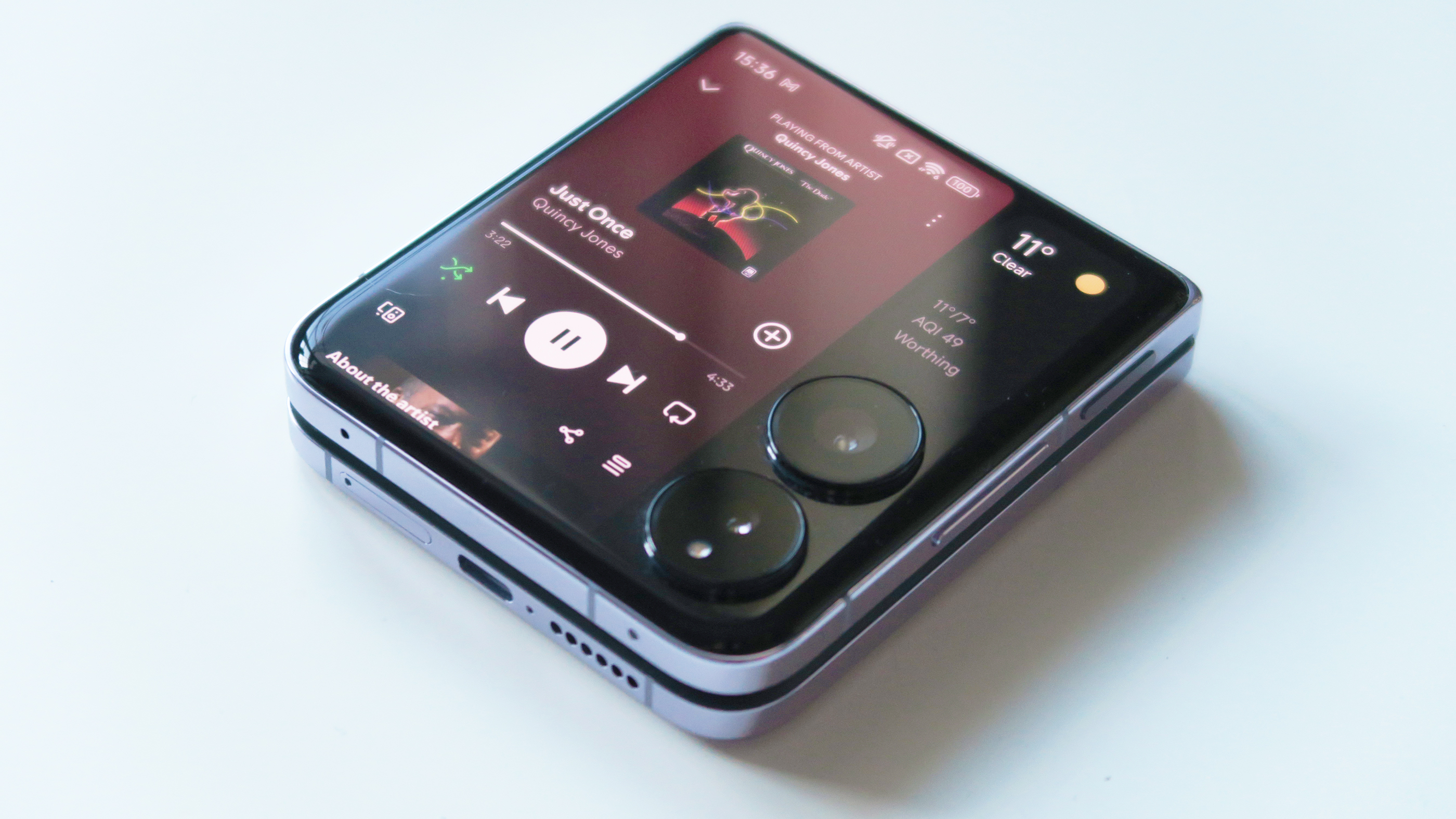
Not unlike Oppo's Find N3 Flip, the remainder of the display works out to about a 16:9 aspect ratio, meaning apps scale far more naturally, compared to the squat, square screen real estate offered up by most of the other best foldable clamshell phones.
As such, the outer screen experience is really nice and natural to use, with great continuity, if you want to switch to the main screen mid-app, by opening the phone up. Typing is understandably cramped but not impossible and Xiaomi cites support for over 100 apps, which in testing included key experiences like Instagram, Spotify, YouTube, TikTok and Google Maps.
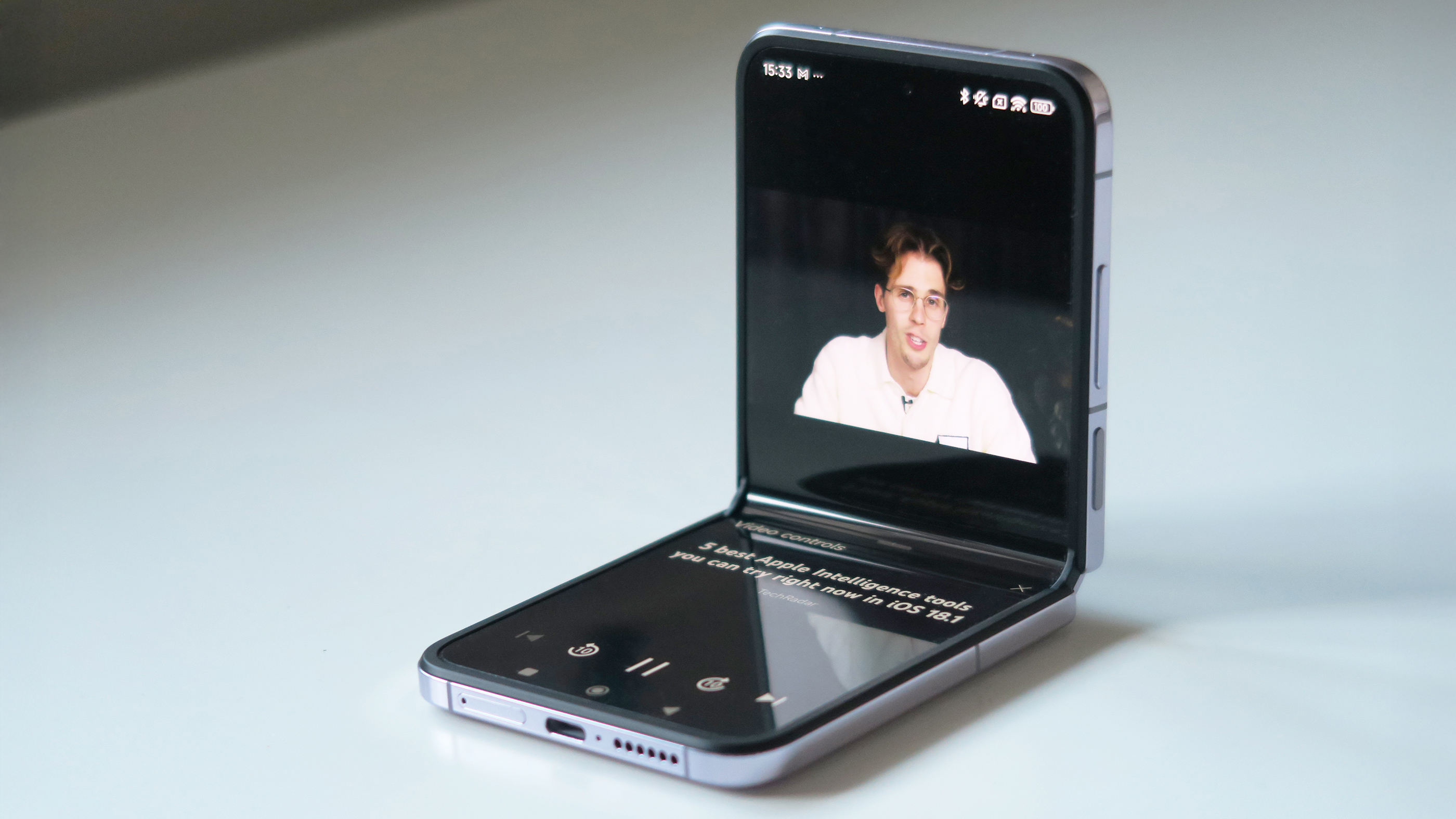
If you want to color outside the lines with that cover display, however, there's very little the Mix Flip lets you do. Unlike Motorola's Razrs – which let you try most apps out on the cover display, even if they don't format well, the Mix Flip is more locked down.
There's a one-click tool to enable this feature, but it only works on the Chinese variant of the Mix Flip, while some have managed to rename APK files to trick the Mix Flip into thinking it's running an already-whitelisted app, but neither solution is exactly accessible to international users.
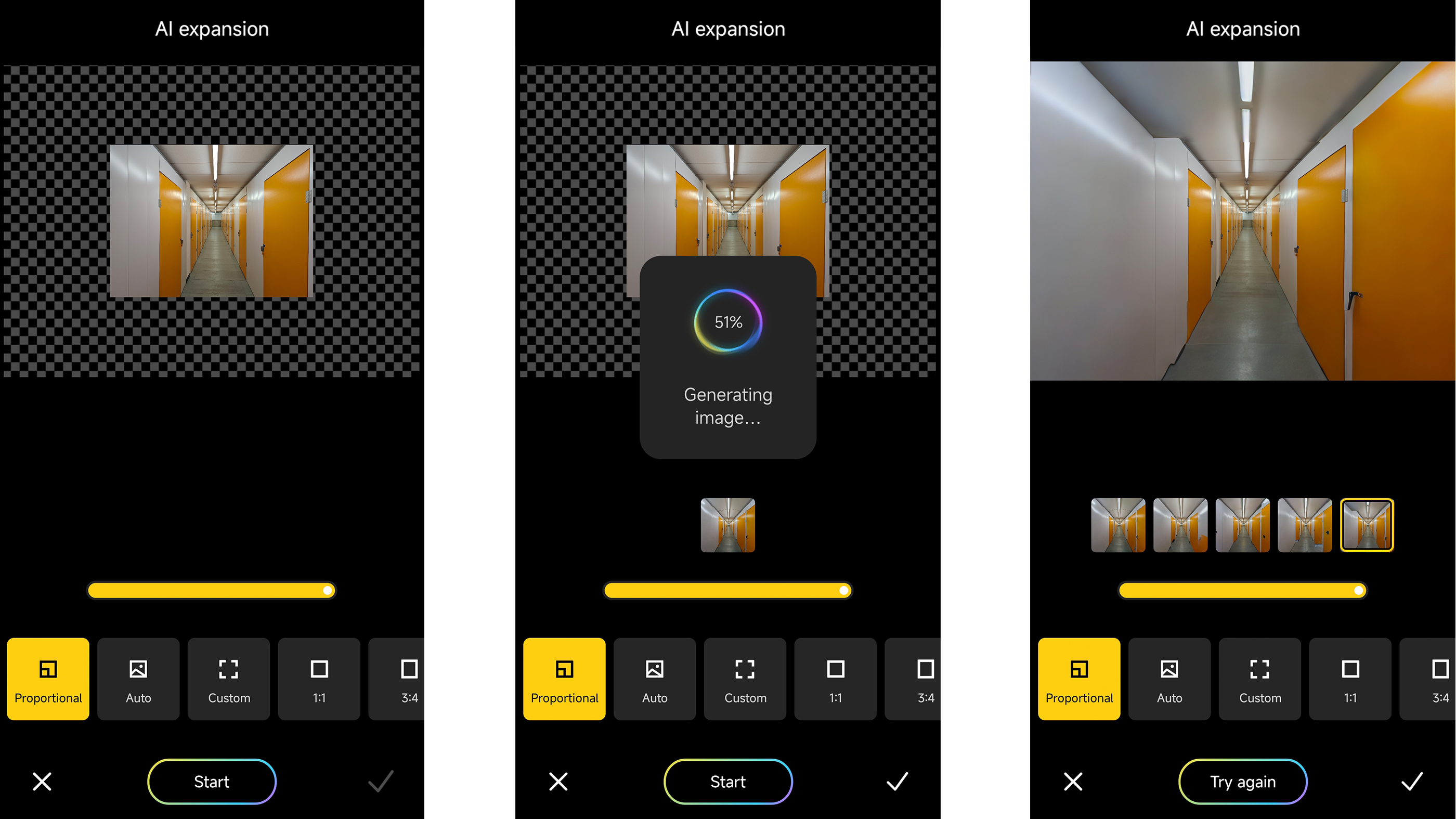
HyperOS also heralds the introduction of AI into Xiaomi's user experience in a meaningful way. The phone's on-device photo editing tool set – including AI Expand (which lets you crop outwards on an photo, filling in the gaps created around the edges) – is one of my favorite additions.
The Mix Flip's AI repertoire also includes object removal, speech-to-text transcription when using the native Recorder app, translation, formatting and summarization within the Notes app, and Google's own Circle to Search functionality.
Performance is on-par with the status quo, in terms of feature diversity and reliability. All the Mix Flip's AI functionality works as advertised, but seldom will a feature deliver a 100% accurate result first try. Something Xiaomi is, no doubt, working to improve across its devices, by improving the quality of its on-device and cloud-based AI models.
- Software score: 3.5 / 5
Xiaomi Mix Flip review: Camera
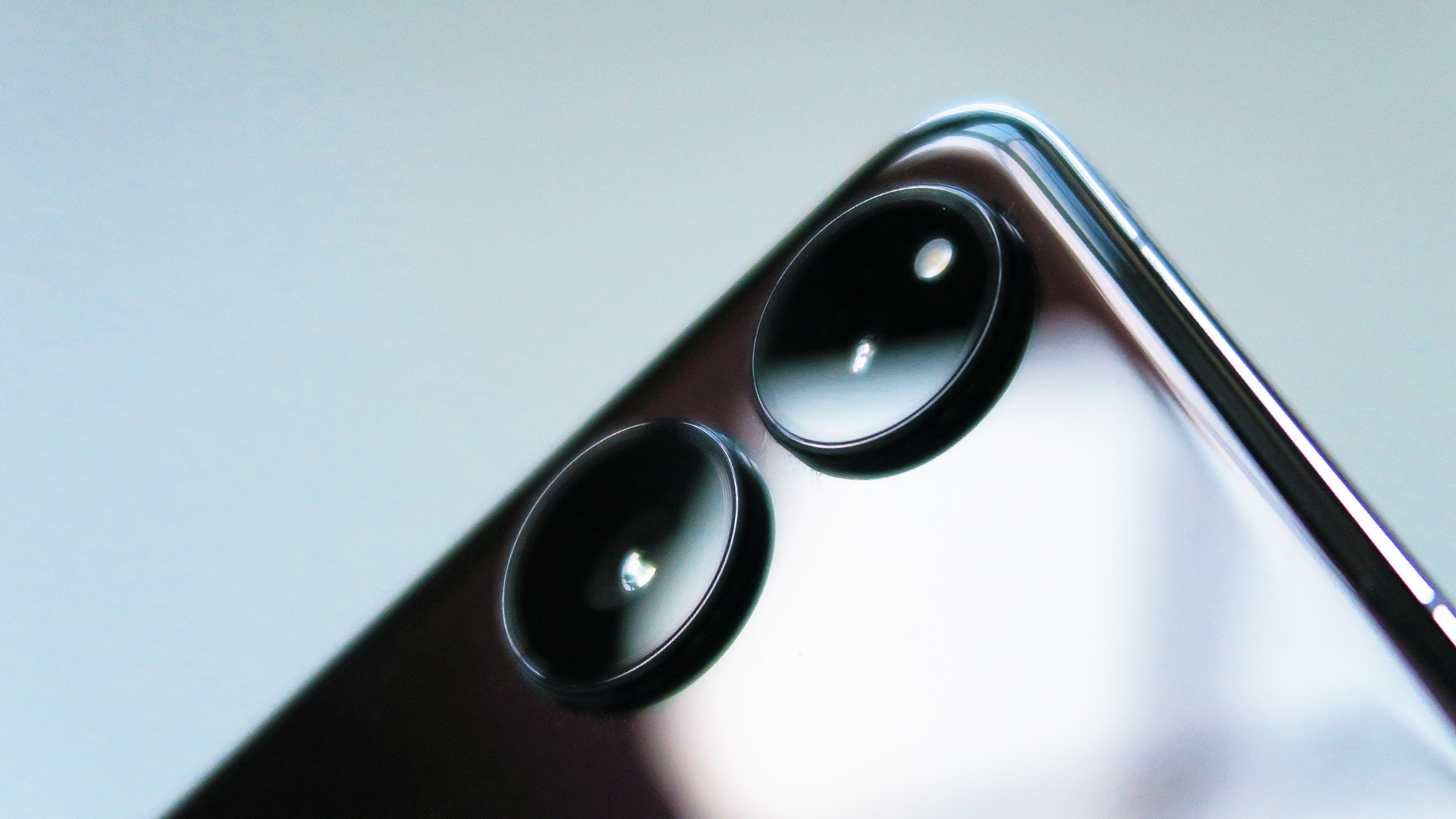
- 50MP main and 2x external cameras
- 32MP front-facing camera
- Up to 8K at 24fps video recording
Xiaomi is responsible for some of the best camera phones on the market, but the clamshell form factor poses some unique challenges to maintaining a compact design while still including large camera sensors able to deliver a noteworthy photographic experience.
The company's expertise and image processing are what grant the Mix Flip probably the best cameras of any clamshell foldable I've seen, even if they remain hamstrung by the same limitations as this phone's rivals.
The two cameras on the phone's exterior each clock in at 50MP a piece, then use pixel binning to spit out 12.5MP stills, as well as 8K video recording at 24fps.
Xiaomi Mix Flip camera samples
















The Mix Flip is fronted by Xiaomi's Light Fusion 800 sensor (a tweaked OV50E sensor, called the OVX8000). Measuring 0.64-inches, it's a fraction bigger than the main sensor on the Samsung Galaxy Z Flip 6. This sensor crops up in Poco F6 Pro too: a phone that costs half as much and doesn't place much emphasis on photography.
In spite of what looks like middling camera hardware, the Mix Flip delivers a pretty well-rounded photographic experience. Color and contrast are the system's best assets; with punchy shots that – unlike the latest iPhones and Pixels – don't suffer from heavy-handed HDR processing that tries to eliminate shadows and flatten everything.
Xiaomi's long-standing partnership with Leica persists on the Mix Flip, with the familiar ability to shoot in Leica Vibrant (my preference) or Leica authentic digital film stocks, along with a set of Leica-approved filters that can be applied at or after capture. Still, the sensors' limitations make me question whether the Mix Flip is worthy of toting the Leica name.
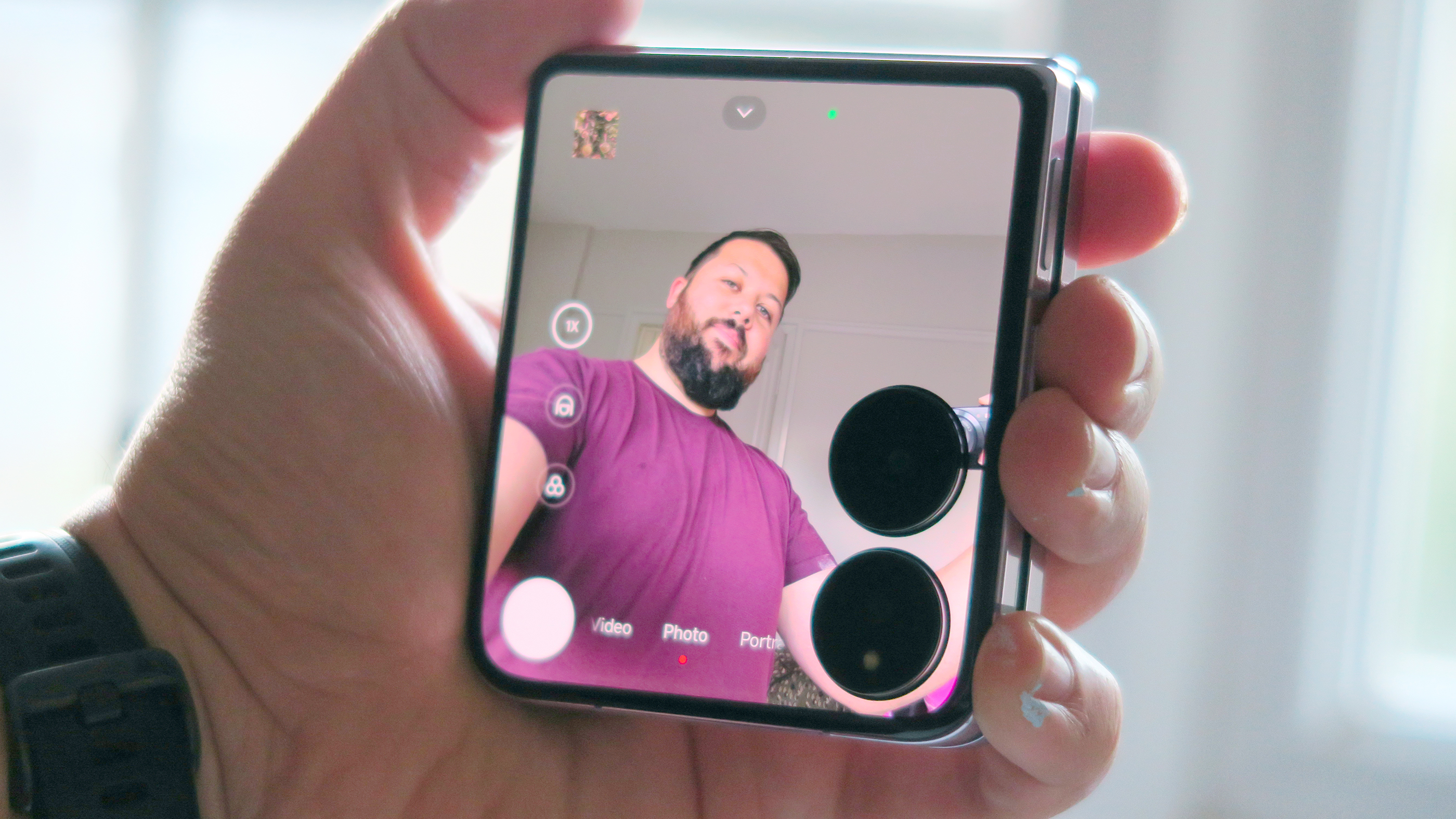
A lack of detail and sharpness are what hold the Mix Flip's cameras back from the true top snappers of the moment, but even so, you can still take great shots with this phone. That's made all the better by the ability to snap selfies with the external cameras, using the outer screen as a viewfinder.
The form factor also allows the phone to stand up hands- and tripod-free and, like the Galaxy Z Flip series, the phone can also be held half open when shooting video, like an old-school camcorder, which genuinely with grip and stability.
- Camera score: 4 / 5
Xiaomi Mix Flip review: Performance
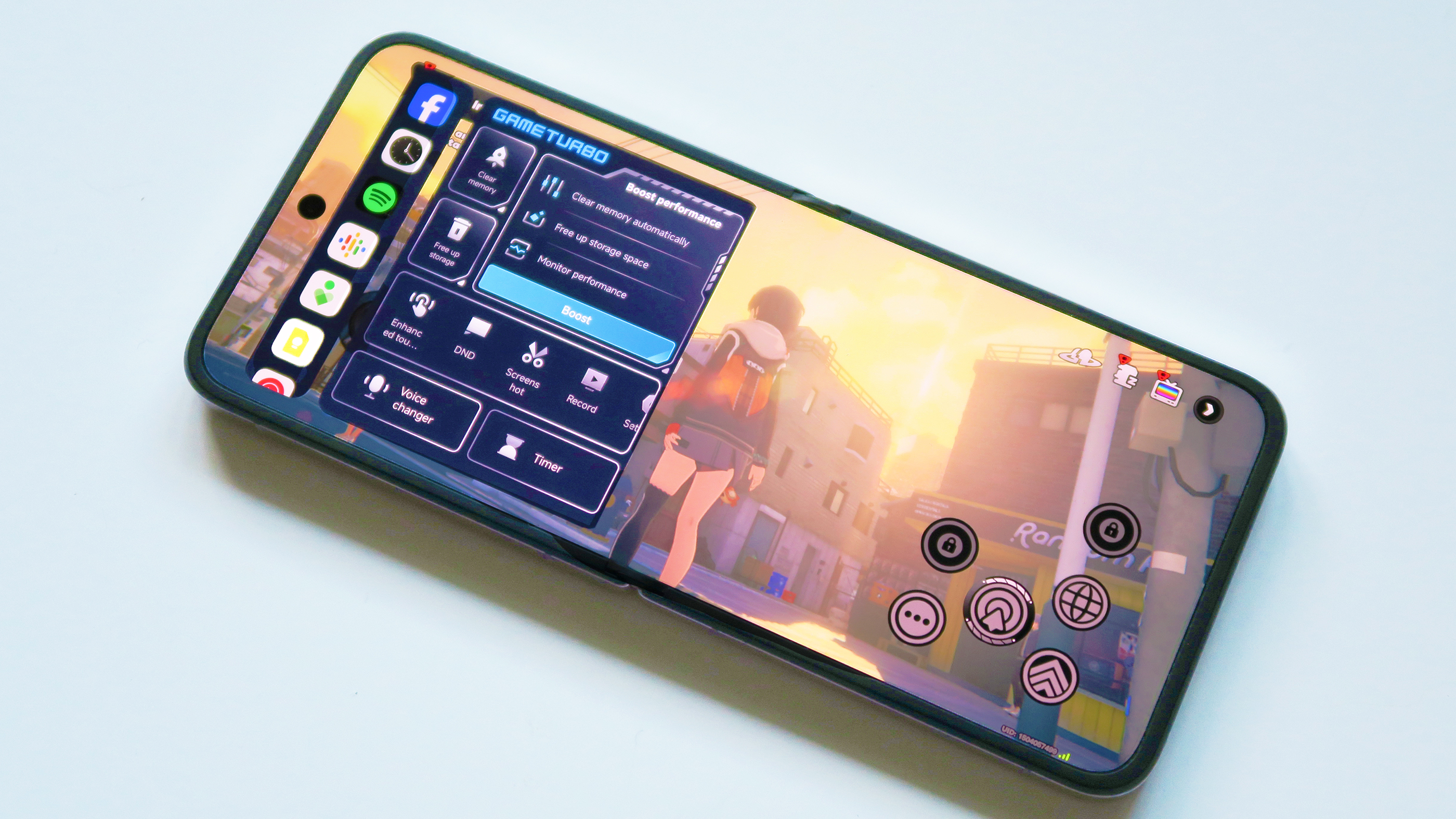
- 4nm Qualcomm Snapdragon 8 Gen 3 chipset
- 12GB LPDDR5X RAM + Memory Extension up to 8GB
- Sole 512GB UFS 4.0 storage option
Like the cameras, the unique convenience of the Mix Flip's form factor is a double-edged sword when it comes to performance.
The Snapdragon 8 Gen 3 chipset, paired to 12GB of RAM, delivers true flagship-class performance, which ensures split-screen or floating window multitasking is fast and fuss-free, and app load times are consistently brief.
Benchmarks place the Mix Flip on par with the brand's current best, the Xiaomi 14 Ultra, while high-end games, like Zenless Zone Zero default to 'high' graphical settings.
That said, I wouldn't readily recommend the Mix Flip as a go-to gaming phone. While it can run the latest mobile games with high frame rates and excellent graphical fidelity, the cramped innards makes cooling tricky and sustained performance (like long gaming sessions) are the fastest way to see the phone throttle back to keep heat under control.
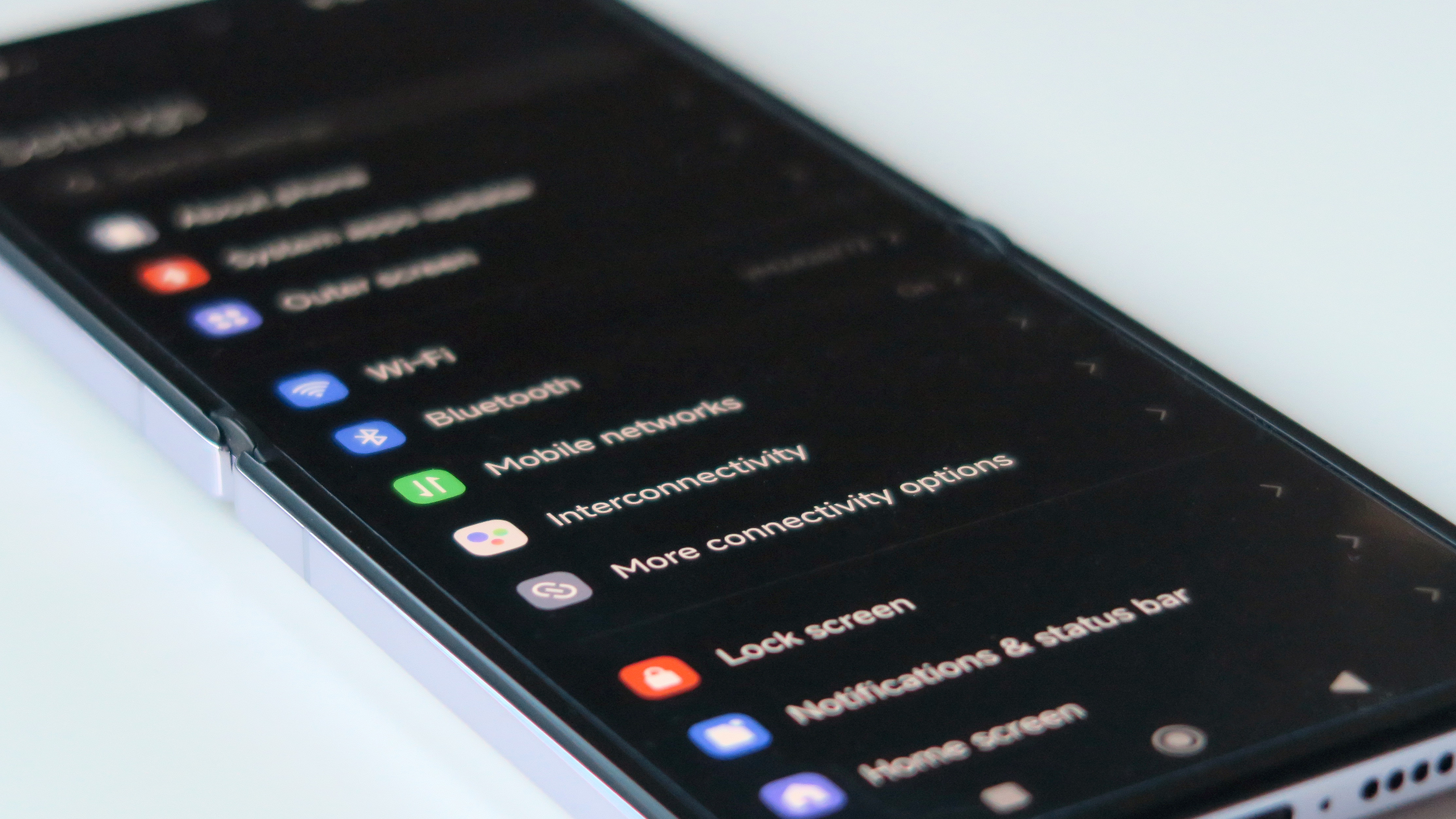
In everyday use, however, you're unlikely to run into any sort of major performance ceilings for quite some time, with the chip helped by a heap of fast and power efficient LPDDR5X RAM.
Although not expandable, 512GB of internal storage is more than likely to satiate most users. In China, Xiaomi offers versions of the Mix Flip with 16GB of RAM and up to 1TB of storage, however, I don't think international audiences will be too cut up about the single variant on offer.
- Performance score: 4.5 / 5
Xiaomi Mix Flip review: Battery
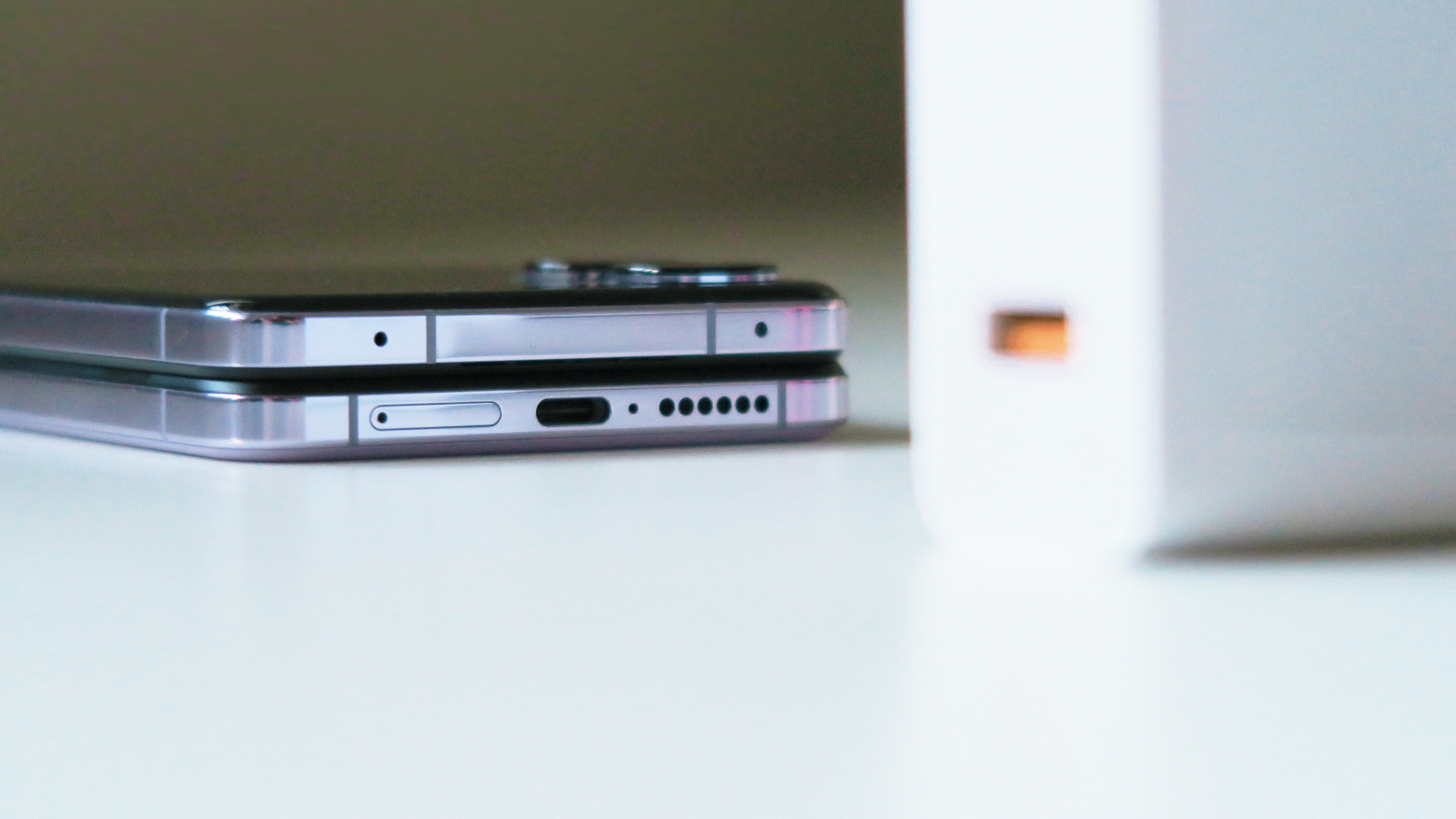
- 4,780mAh battery
- 67W wired charging
- No wireless charging
Despite all of this talk of size limitations, one piece of hardware that Xiaomi hasn't gone small on is the phone's battery. In the clamshell foldable market, the Mix Flip's capacious 4,780mAh cell is second only to the fractionally-larger 4,800mAh battery inside the Honor Magic Flip V, which released earlier in 2024.
As for real-world use, screen-on time is respectable enough to get most users through a day, at around 6.5 to 7 hours. While I was expecting it to last a little longer, considering the size of the battery, the more demanding display setup is likely what balances longevity against rivals with smaller power packs, like the 4,000mAh offering inside the Z Flip 6.
Thankfully, Xiaomi has paired it with characteristically snappy 67W wired charging, and using the in-box power adapter, I was able to refill the Mix Flip to full under an hour (55 minutes), with two-thirds of the battery topped back up after just 30 minutes.
The only other caveat is that the Mix Flip forgoes wireless charging of any kind; a small hit to the phone's convenience.
- Battery score: 4 / 5
Should you buy the Xiaomi Mix Flip?
Buy it if...
Don't buy it if...
Xiaomi Mix Flip review: Also consider
How I tested the Xiaomi Mix Flip
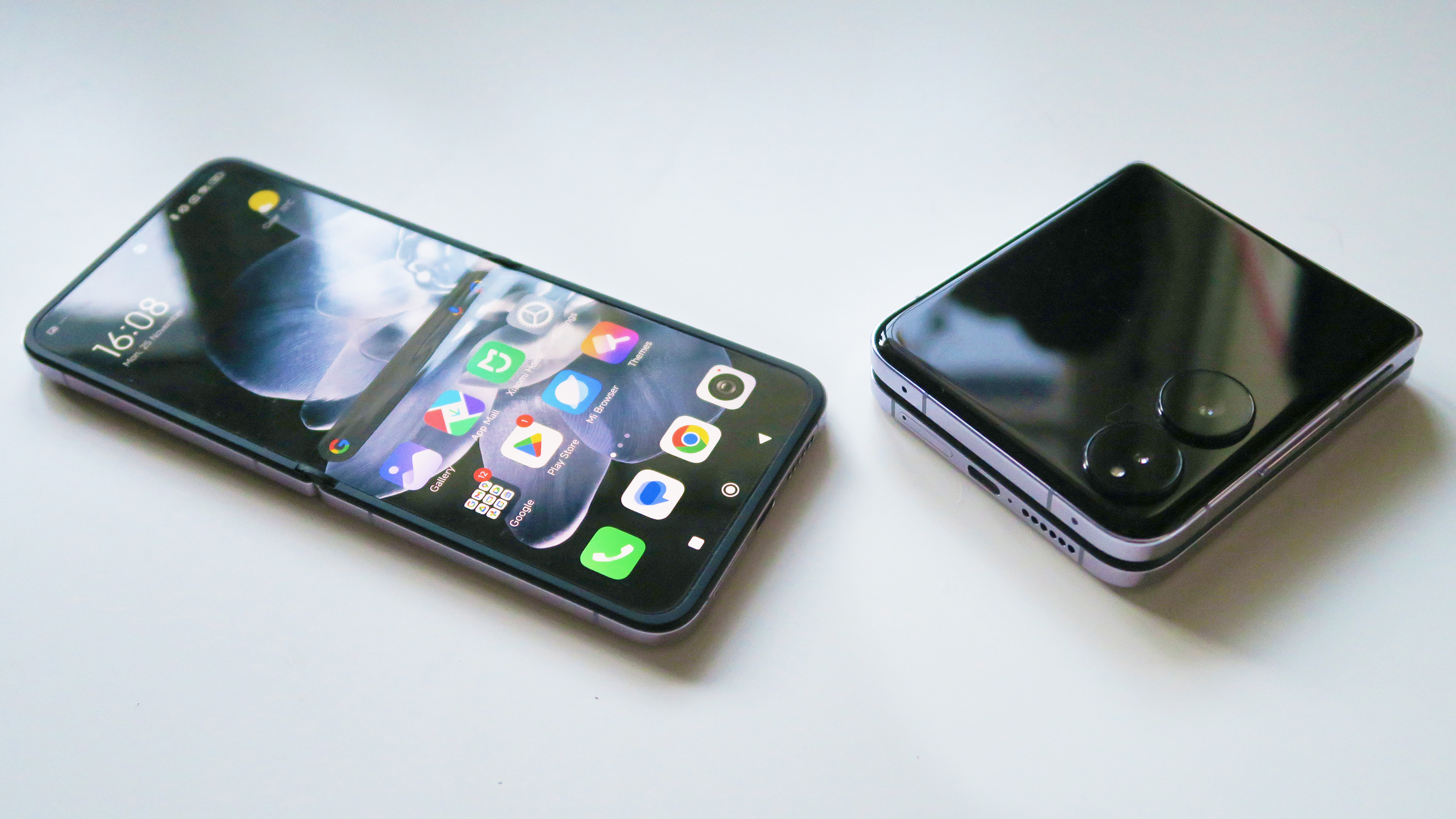
- Review test period = Three weeks
- Testing included = Everyday usage, web browsing, social media browsing, video streaming, gaming, photography
- Tools used = Geekbench 6, Geekbench ML, native Android stats
I lived with the Xiaomi Mix Flip as my main device, using it in the day to day for the duration of the review period for everything from social media and gaming, to contactless payments and navigation, when out and about.
I made sure to trial all of the HyperOS and Mix Flip-specific features, and used it in scenarios comparable to situations in which I've put previous clamshell foldables, like Z Flips and Razrs.
I used a standard run of industry-used benchmarking apps to help assess CPU and GPU performance, while also timing battery drain under specific use cases (an hour of HDR video streaming at 50% brightness, for example), along with Android's native screen-on time metrics and timed recharge testing at 15-minute intervals, until full, using the provided 67W in-box charger.
As a reviewer with 13 years experience, and having reviewed previous Xiaomi phones as well as numerous foldables, I felt confident assessing and scoring the Xiaomi Mix Flip, relative to other clamshell foldables on the market, and in the context of the wider smartphone market.
Read more about how we test
First tested November 2024







